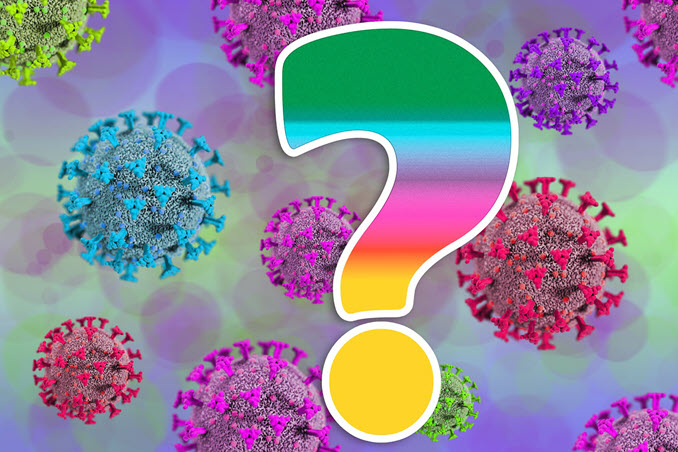
A Short Preview:
Full Interview – Future Science Series: “Unknown Ingredients”: mXNA and the Kozak Sequence with Daniel Santiago:
Listen to the MP3 audio file
Transcript:
Read the PDF of Future Science Series:
“Unknown Ingredients”: mXNA and the Kozak Sequence
with Daniel Santiago Interview 
“Be anxious for nothing, but in everything by prayer and supplication, with thanksgiving, let your requests be made known to God; and the peace of God, which surpasses all understanding, will guard your hearts and minds through Christ Jesus.” ~ Philippians 4:6-8
By Ulrike Granögger
One particular characteristic of the new RNA-based “vaccines” is their use of a modified nucleoside in place of the naturally occurring uracil in the blueprint of the coronavirus spike protein. N1-Methylpseudouridine (abbreviated m1Ψ) is said to be more stable and to drive increased protein production. It is claimed that because m1Ψ can be found “naturally” in all kinds of RNA, it lends itself to the stabilization of the synthetic spike-producing injections.
But can a component of transfer-RNA (tRNA, not mRNA!) of a single-cellular archaeal organism really be repurposed for use in the messenger-RNA (mRNA) of a complex multicellular organism like the human body? Would not its affinity to anaerobic microorganisms like archaea, which also exist in our body’s microbiome, facilitate spike protein expression in the gut (and elsewhere), in addition?
Daniel Santiago, PharmD, molecular biologist and pharmacist, believes it would. In this week’s scientific conversation, Dr. Danny and I discuss some of the aspects of “unknown ingredients” in the C19 injections that are rarely talked about.
Solari Report subscribers remember from “The Mathematics of the Genetic Code” (2019) that DNA and RNA are structured by a profound symmetry of balances in the molecular weight of each of the 20 amino acids (coded from 64 different nucleotide triplets). Changing only one atom in this code would mess up the astonishing, self-referential symmetries that researchers like Vladimir shCherbak found. Is it safe to substitute m1Ψ for uracil, effectively creating a new form of mXNA (Xeno-RNA)? What are the consequences if reverse transcription occurs?
Daniel also speaks about the importance of the “Kozak consensus sequence,” the string of nucleic acids that functions as the “start” of protein translation, which hitherto has been completely ignored in the discussion of safety of the new inoculations. Kozak sequences are different and unique within various species. The Kozak sequence regulatory paths are not the same for each gene. What proteins and peptides (protein fragments with their own functionality in the organism) could be the result from a modified Kozak sequence?
Are “hidden genes” part of the unknown ingredients in these vials? Dr. Santiago also discusses the discovery of amyloid- and hydrogel-forming amino acid sequences found in the injected spike blueprints, two of which are of a fibrillar nature. What is their relationship to strange blood clots and ubiquitous thromboses? (Only after the recording of this interview was our attention drawn to fibril-based hydrogels formed by spidroins (spider silk proteins); the latter are increasingly being used to fabricate biomaterials for tissue engineering/regenerative medicine. See Links in Footnote.) And finally, why have Japanese and Argentinian universities found spectroscopic signatures of metals in Pfizer and Moderna vials?
Follow us in this extensive scientific presentation by a brilliant molecular biologist and concerned health professional.
Money & Markets:
In Money & Markets this week, John Titus and Catherine will cover the latest events and continue to discuss the financial and geopolitical trends Solari is tracking in 2023—and the pushback rocking and rolling us around the globe. Post questions at the Money & Markets commentary here.
Daniel Santiago’s professional background:
Daniel Santiago, PharmD, Bachelor of Science, concentration in molecular and genetic biology from Temple University in 1992. Coursework in laboratory techniques in molecular biology and genetics at the University of Pennsylvania at Philadelphia’s Wistar Institute (1992-1993) on a federal grant. Worked with Chin C. Howe, PhD, holder of the noted patent of the SPARC (secreted protein acidic cysteine-rich glycoprotein) deficient transgenic mouse; identified and characterized the promoter of the elongation factor-2 (EF-2) gene, essential for protein synthesis, and helped Howe to map a region proximal to this promoter that drives ubiquitous expression and found it bound to a transcription factor producing DNA-protein complex. With his doctorate in pharmacy (PharmD) from Nova Southeastern University in Fort Lauderdale, Florida, he works in pharmacy in the state of Florida.
Related:
Bibliography/References (PDF)
Publications by Dr. Daniel Santiago:
John W. Oller, Daniel Santiago. All Cause Mortality and COVID-19 Injections: Evidence from 28 Weeks of Public Health England “COVID-19 Vaccine Surveillance Reports.” International Journal of Vaccine Theory, Practice, and Research. 2022;2(2):301-319.
Daniel Santiago, John W. Oller. Abnormal Clots and All-Cause Mortality During the Pandemic Experiment: Five Doses of COVID-19 Vaccine Are Evidently Lethal to Nearly All Medicare Participants. International Journal of Vaccine Theory, Practice, and Research. 2023;3(1):847-890.
Daniel Santiago. A Partial Answer to the Question Posed by David A. Hughes, PhD, in the Article: “What is in the so-called COVID-19 ‘Vaccines’? Part 1: Evidence of a Global Crime Against Humanity.” International Journal of Vaccine Theory, Practice, and Research. 2022;2(2):587-594.
Daniel Santiago. Playing Russian Roulette with Every COVID-19 Injection: The Deadly Global Game. International Journal of Vaccine Theory, Practice, and Research. 2022;2(2):619-650.
Related Solari Reports:
Future Science Series – The Mathematics of the Genetic Code with Ulrike Granögger (2019)
“Plasmidgate” – mRNA Injections Are Contaminated with Bacterial DNA
Footnote:
It was discovered recently that recombinant mini-spidroins form hydrogels within minutes, if incubated at 37°C. See: Arndt T, Chatterjee U, et.al. Tuneable Recombinant Spider Silk Protein Hydrogels for Drug Release and 3D Cell Culture. Advanced Functional Materials. May 2023. And: Jessica Rose. What a tangled web we may have weaved (Substack, Nov. 5, 2023)
views: 66


